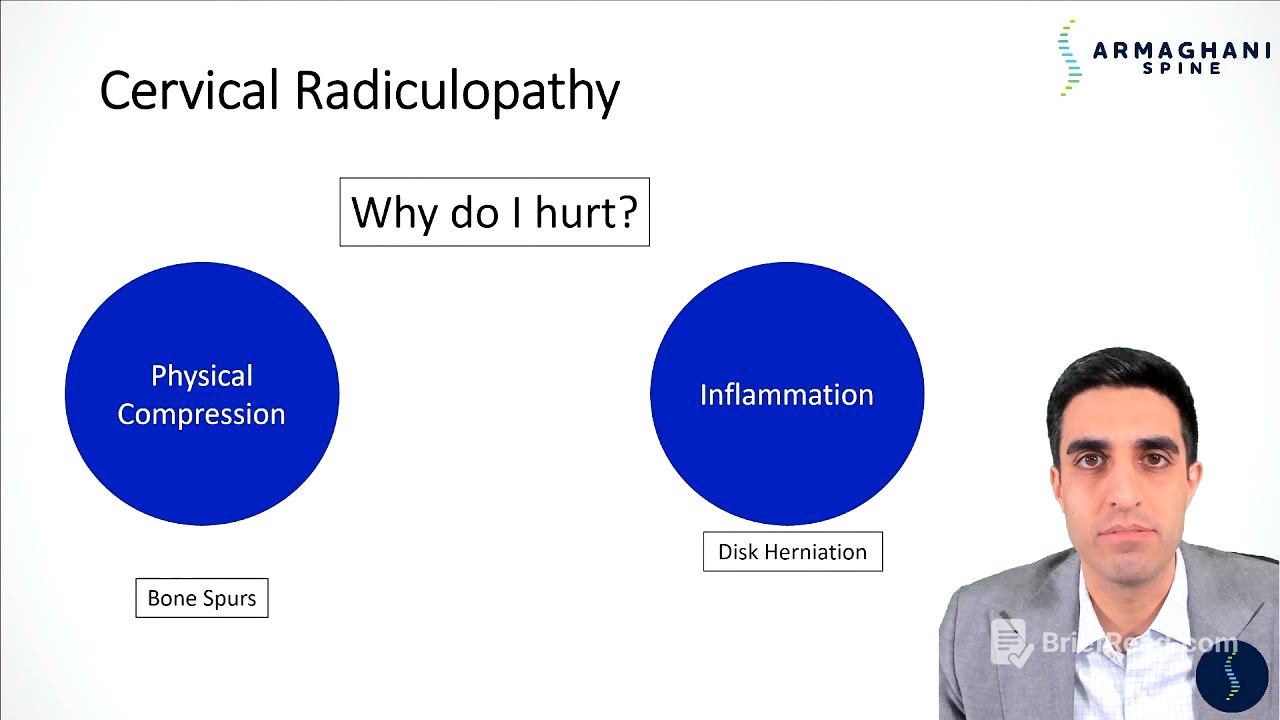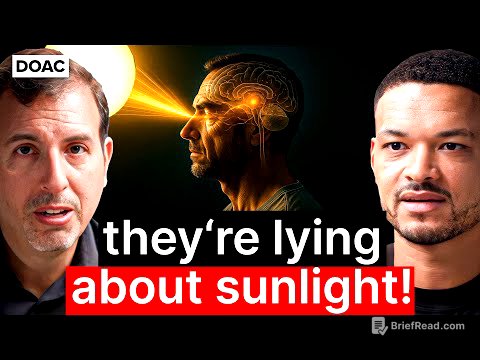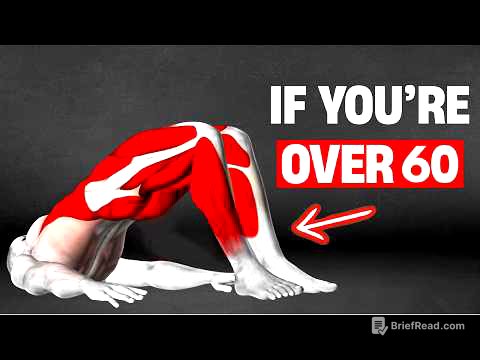TLDR;
Alright, so this video is all about cervical radiculopathy, which is basically a pinched nerve in your neck. Dr. Armaghani explains what it is, what causes it, and how it's treated. Key takeaways include:
- Understanding the anatomy of your neck and spine.
- Knowing the symptoms and causes of a pinched nerve.
- Learning about the different treatment options, from medication to surgery.
Intro [0:00]
Dr. Armaghani introduces the topic of the video: cervical radiculopathy, or a pinched nerve in the neck. He mentions symptoms like pain radiating from the neck to the shoulder blade, numbness and tingling in the arm and hand, and how these symptoms can be triggered by certain activities or positions. The video will cover normal MRI anatomy, symptoms, causes, and treatment options for this condition.
Anatomy and Overview [0:58]
The video explains normal MRI anatomy of the cervical spine. It shows a side view of the spine, pointing out the muscles, spinous processes (the bony part you feel at the back of your neck), vertebral bodies (the building blocks of the spine), and discs (the cushions between the vertebrae). The spinal cord, which comes down from the brain stem, is also highlighted, along with the spinal fluid that surrounds and nourishes it. Then, it switches to a top-down cross-sectional view, showing the muscles, spinous process, disc, spinal cord, and most importantly, the foramen. The foramen is the hole where the nerve exits the spinal canal and goes down the arm. If this space is narrowed, it can cause a pinched nerve.
Symptoms, Causes, Expected Recovery, Treatments [6:36]
Patients with cervical radiculopathy may experience discomfort (sharp, burning, or electrical pain, or just numbness and tingling) in the neck, shoulder blade, shoulder, arm, forearm, or hand. In severe cases, they may have sensation loss and weakness. Sometimes, it can even cause chest pain that mimics a heart attack. Cervical radiculopathy is often caused by disc herniation or bone spurs that compress the nerve in the foramen. The pain can be due to physical compression of the nerve or inflammation around the nerve. Most patients (75-90%) get better with non-operative treatment like medication (anti-inflammatories and steroids), physical therapy, or chiropractic care. Epidural steroid injections can also help reduce inflammation. If these treatments don't work, surgery (anterior cervical discectomy and fusion or cervical disc arthroplasty) may be considered.
Conclusion [17:03]
Dr. Armaghani recaps the topics covered in the video: anatomy, symptoms, causes, and treatment of cervical radiculopathy. He reiterates that most patients improve with non-operative care, and surgery is only for those who don't respond to conservative treatment. He encourages viewers to seek a consultation if they think they have symptoms of cervical radiculopathy and provides contact information for his office and website.








